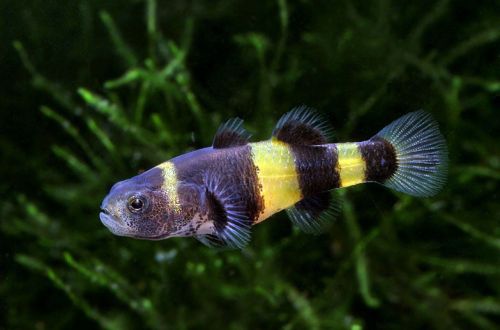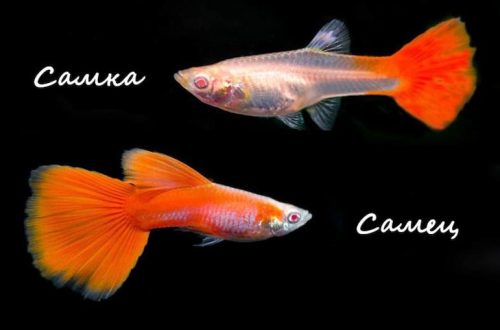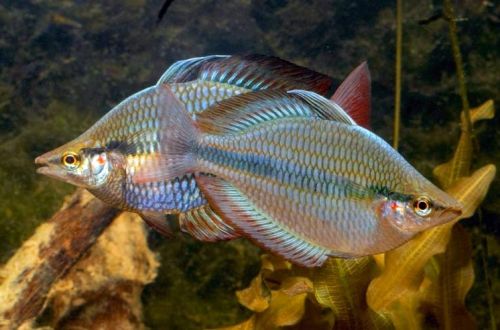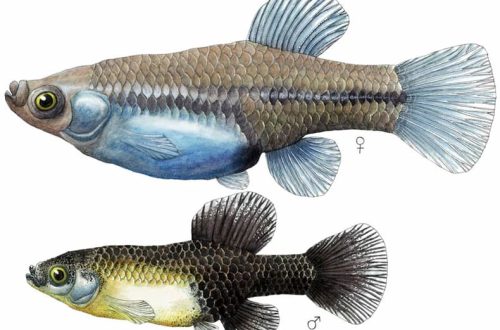
bumblebee goby
The Bee Goby, Golden Striped Goby or Bumblebee Goby, scientific name Brachygobius doriae, belongs to the Gobiidae family. For a long time there was confusion and this species was mistakenly attributed to Brachygobius xanthozonus, which is not found in the aquarium trade at all. However, both of these fish are almost identical and live in similar conditions, so for ordinary aquarists, errors in scientific names do not matter.

Contents
Habitat
It comes from the Indonesian islands of Java, Sumatra and Borneo. Inhabits lowlands along coastlines with brackish water, such as mangrove swamps, estuaries (mouths of rivers flowing into the sea). Almost never found in fresh waters. The natural habitat is characterized by sandy, silty substrates with a lot of mud and organic matter.
Brief information:
- The volume of the aquarium – from 80 liters.
- Water and air temperature – 25-26°C
- Value pH — 7.6–8.0
- Water hardness – medium to high hardness (10-25 dGH)
- Substrate type – sandy, silty
- Lighting – moderate, bright
- Brackish water – yes, at a concentration of 2 grams. per 1 liter of water
- Water movement – weak, moderate
- The size of the fish is about 3 cm.
- Nutrition – meat feed
- Temperament – quarrelsome, territorial
- Content in a group of 5 individuals
Description
Adults reach a length of up to 3 cm. The fish has a large blunt head and large eyes. The fins are short, the dorsal is divided in two. The coloration consists of alternating large stripes of black and yellow. Sexual dimorphism is weakly expressed, there are no obvious differences between male and female. Only during the spawning period in males do the yellow stripes acquire a reddish tint.
Food
Carnivorous look. The home aquarium will accept live or frozen foods such as bloodworms, daphnia, brine shrimp. Dry food is usually ignored.
Maintenance and care, arrangement of the aquarium
The optimal size of the aquarium for a small group of fish starts from 80 liters. The design should provide for a lot of shelters in the form of snags so that the Golden-banded gobies have the opportunity to hide from the dominant individual. As a substrate, coral sand will be an excellent solution, which helps to maintain a high hardness and alkaline pH values of the water. The presence of plants is not necessary, but if desired, unpretentious varieties can be used, but first they must be acclimatized to brackish conditions.
Successful management depends on maintaining a stable hydrochemical composition and high water quality. For these purposes, a productive filtration system is used and regular aquarium maintenance procedures are carried out: weekly replacement of part of the water with fresh water and removal of organic waste. When choosing a filter, you should give preference to models that do not cause excessive flow.
Behavior and Compatibility
Males are territorial and fight for areas on the bottom, despite this, it is recommended to keep at least 6 individuals in a flock so that aggression does not spread to other inhabitants of the aquarium. That is why various shelters must be provided. Compatible with other calm species of comparable size, able to live in brackish conditions. Fish that live in the water column or near the surface are preferred.
Breeding / breeding
The bee goby spawns in small caves, which can serve as ceramic pots, hollow tubes, and shells. The male chooses a suitable place and waits for the female to swim nearby. It is worth noting that the most dominant individual will have the best place in the aquarium. When the female is ready, she accepts courtship and lays 100–200 eggs in the cave, after which she leaves the clutch, and the male remains to protect future offspring. The incubation period lasts about 9 days. At first, the fry feed on the remnants of the yolk sac, then they should be offered microfeed, for example, Artemia nauplii.
Fish diseases
In favorable conditions, diseases in fish rarely occur, therefore, when the first symptoms are detected, the quality and composition of the water should first be checked. Often, if everything is returned to normal, the body of the fish itself copes with the disease and the symptoms disappear. Although in advanced cases, treatment is required. More about this in the section “Diseases of aquarium fish”.





